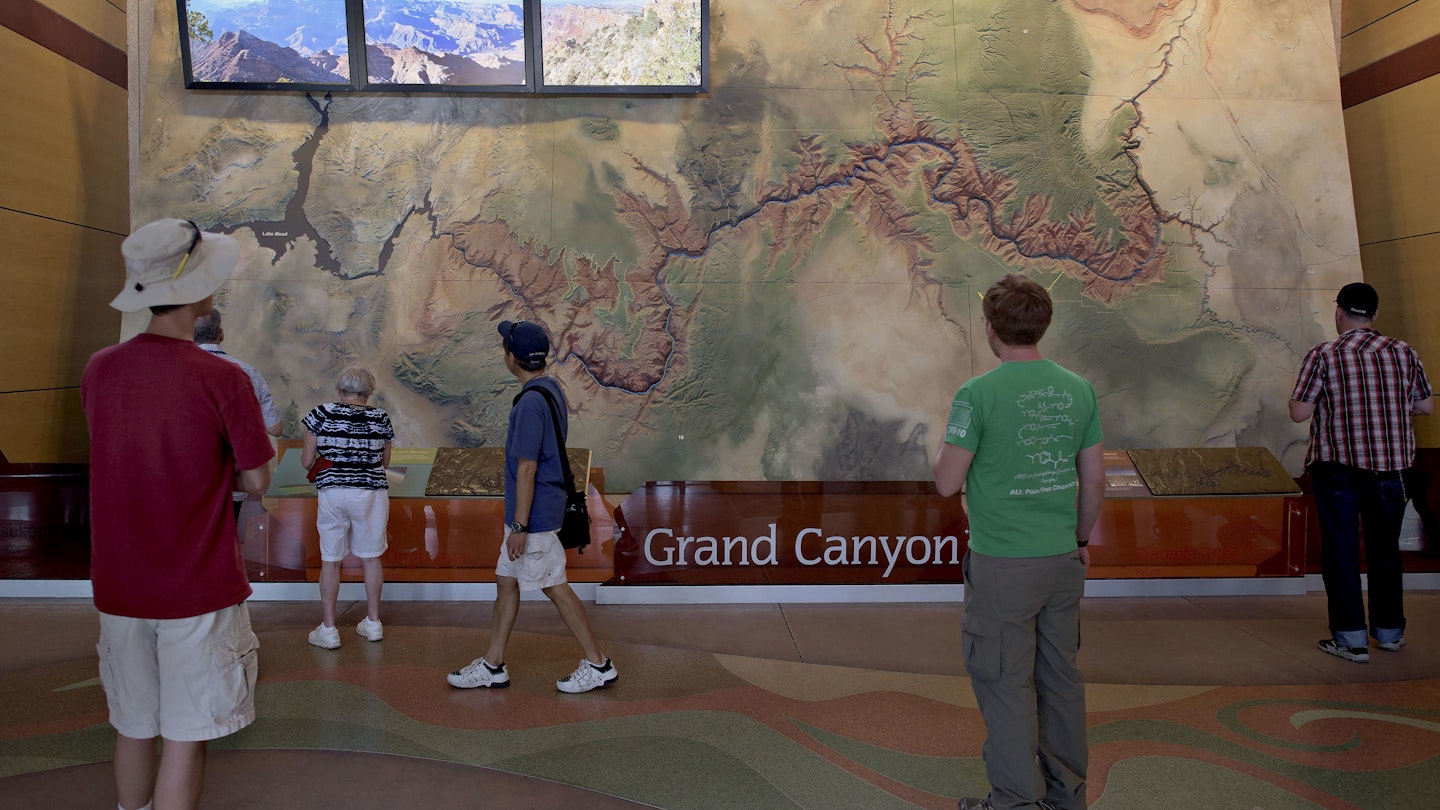Visitor Centers in National Parks: Why You Should Stop By
Thanks to the internet, it’s easier than ever to orient, inform, and update yourself on key features, suitable hikes, and current conditions before visiting a National Park. However, does it still make sense to enter these indoor welcoming centers, or should you head straight for the outdoor landscapes that are being preserved?
I reached out to dozens of recent National Parks visitors, and the response was swift and decisively in favor of visiting these buildings first before making your way into the park.

“No amount of web-based planning can replace a stop at the visitor center for a local’s perspective, pro-tips, and the most up-to-date information on seasonal experiences and day-to-day changes within the park,” argues Jonathan Farrington, director of the Yosemite Tourism Bureau. “You may miss a natural phenomenon that’s occurring because it wasn’t part of previously published materials!”
Alternatively, you could get stuck in bad weather or waste time trying to get somewhere that’s seasonally closed. “My family visited Zion National Park early one season and had committed a whole day to hike the Emerald Pools Trail,” remembers Stacy Bressler from Jackson, Wyoming. “After going to the visitor center, however, we found that only the lower portion was open due to rockfall associated with spring runoff, so we adjusted our plans accordingly with the help of the ranger.”

Moreover, visitor centers offer the most up-to-date information on animal sightings and current locations, which can change faster than a web administrator or social media manager is able to update online. In other words, nobody knows a National Park better than on-site rangers.
“While the internet can give you ideas ahead of time, and Instagram can show you the most stunning views, neither can tell you the actual conditions of a park as well as a ranger,” says Mikah Meyer, the first person to visit all 419 National Park sites in a single journey. “Even in the least visited parks, the rangers are incredibly passionate about their sites, which is invaluable to those arriving with a set amount of time and physical abilities.”
Visitor centers also provide proper context that is often lost or easily overlooked in the information overload of the internet.
“I always have a more fulfilling experience after learning about the uniqueness and justification for a park from a visitor center or on-site museum,” says David Stephan from Phoenix. “To me, no National Parks visit is complete without the interesting exhibits found in the visitors center.”

While most enthusiasts I talked to make a visitor center their first stop, there’s no telling how many indifferent visitors skip it altogether in favor of a scenic drive or en route to their most sought-after trail. Or those who would rather see a place for themselves.
Katie Marshall, for example, is a fan of the “never” category. “For me, finding out everything before seeing the park takes away the awe, element of surprise, and some of the magic of a new site,” she says. “It’s like reading a movie synopsis before watching the movie!” Consequently, going in fresh can have a more profound impact than seeing a preview at the visitor’s center.
Maggie Hari from Sydney, Australia agrees. “I mostly skip the visitor center,” she says. “As a hiker with a young family, I do the research a few days before to find toddler-friendly hikes.” Furthermore, Hari argues that most National Park websites are as informative as they are up-to-date on current conditions. “My family only goes to the visitor center if it’s a spontaneous visit with no prior planning.”
Others I spoke to said they enter the visitor center upon completion of their visit, perhaps to pick up some merchandise, buy a t-shirt, or purchase a memento that captures their favorite aspect of the park. Alternatively, they may use it only for a much-needed bathroom break.
“I used to be a first, now I’m a last,” says Flavio Serreti from Rome, Italy. “Not quite knowing what will happen and what you may see adds to the excitement of it all. Then I swing by the visitor center on my way out for some swag.”

As for me and my house, we generally put ourselves in the “last” category after searching online for the latest weather conditions, park updates, and any area closures. But truth be told, my wife and I probably would have missed the amazing, lesser-known, and more remote Cathedral Valley of Capitol Reef National Park had we not seen the impressively large 3D map on display at the visitor center before making our way into the park.
In summary, we might not all agree on the best approach to take when visiting a visitor center (or not). Nonetheless, they’ve undeniably had a positive impact and have certainly evolved since first becoming a National Park staple in the 1950s. How you choose to use them is entirely up to you.





